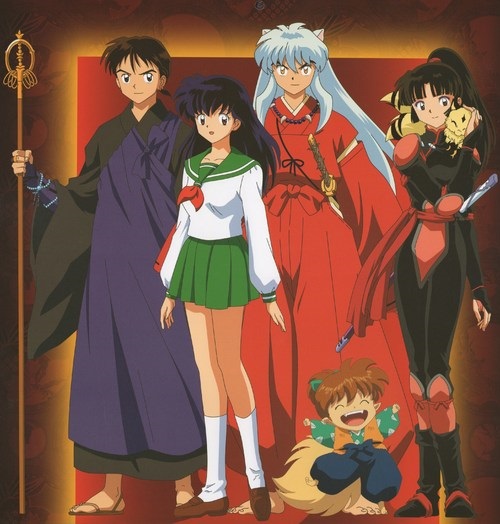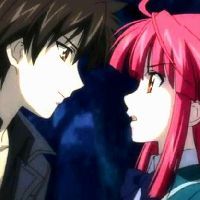
The premise of Japanese folklore comes from two different sectors: Shinto and Buddhism. These tales were derived from foreign literature, such as from India and China. The stories would then be modified and adapted to fit Japanese sensibilities. After adaptation into the culture, the tales would be classified, as follows: waraibanashi (funny stories), tonchibanashi (witty stories), namidabanashi (sad stories), ongaeshibanashi (stories of repaying kindness), yokubaribanashi (stories of greed), mukashibanashi (tales of long-ago), and obakebanashi (ghost stories).
Yokai: Creatures of Japanese Folklore

Let’s take a moment to define what yokai are, and what makes them unique in Japanese folklore. Yokai comes from the kanji form meaning bewitching or attractive, but also mysterious or apparition. They can also be referred to as ayakashi, mononoke, or mamono. It’s their personality that can range from trickery to evil and at times they are known to bring good fortune. They appear in a human form, but can also come in the form of inanimate objects or tengu (who appear as winged humans) and kappa’s (Turtle like appearance). Yokai have made it into Japanese folklore from the spiritual supernatural powers that they possess, and one of the most common of these abilities is shape shifting. Just saying the word yokai can leave much to the imagination since it is such a broad term and encompasses most all monsters and supernatural beings.
Obake and Bakemono

A subdivision of yokai, obake and bakemono are those that shape shift. The difference lies in the fact that obake are similar to yurei, or ghosts, and bakemono refer to living beings that take on temporary transformations. Bakemono disguise themselves as humans or in horrific forms such as noppera-bo, a legendary faceless ghost. True forms of bakemono are illustrated through inanimate objects possessed by a spirit such as kodama, the spirit of a plant, or can come from animals: the fox (kitsune), raccoon dog (tanuki), badger (mujina), or transforming cat (bakeneko). On the other hand, obake takes the form of tsukumogami, which are animate household objects.
Anime with Bakemono
Kamisama Hajimemashita

Kamisama Hajimemashita (Kamisama Kiss) is one of the many anime out there that incorporates the use of Japanese folklore. Not only that, but the anime is riddled with yokai and supernatural beings. The most prominent seen in the anime are yokai such as, Tomoe (fox), Kurama (tengu), and Mizuki (snake). Tomoe is the familiar of the land god’s shrine, while Kurama is a pop star tengu in the human world and Mizuki is a friendly companion of Nanami, the new land goddess. It’s up to Nanami to navigate the world of yokai and learn their rules, yet with each challenge her group of yokai companion’s increase.
Inuyasha

Another anime grueling with yokai is Inuyasha set in the Sengoku period. It’s during this era that the main character Kagome is transported too, and must understand her importance as keeper of a magical Shikon jewel. The jewel shatters into pieces that are scattered around the land, and Kagome, along with Inuyasha (a half-demon) must gather the pieces before the dangerous demon Naraku collects them all. This proves problematic, since the more shards they collect, the more attention they draw to themselves, and the yokai are dying to get their hands on the magical pieces. Kagome and Inyusha will find companions willing to fight alongside them on their search for the remaining shards of the Shikon jewel.
Nurarihyon no Mago

Nurarihyon no Mago (Nura: Rise of the Yokai Clan) features a clan of yokai whose behavior is opposite of their legend counterparts. Most yokai are described as evil that lie in the dark waiting to commit atrocious acts, however this clan takes on a different approach. Nura is only one-fourth yokai, which means he remains human during the day, but at night transforms into his yokai self. He tries to hold on to his human side, and does this by helping humans. He’s next in line to become leader of the clan, but refuses due to his human nature. Eventually his yokai side will catch up to him, and he’ll want the position, but will he be able hold steady as other fractions try to usurp his position?
Yurei

Yurei are synonymous with ghosts in western cultures and another subsection of yokai. It can be broken into two kanji parts with ‘yu’ meaning faint and ‘rei’ meaning spirit. All Japanese ghosts reside under the term Yurei, and there are several types to take note of:
1.) Onryo: Ghosts that harbor vengeance and come back from purgatory usually from a wrong done to them in their lifetime.
2.) Goryo: Ghosts from the aristocratic class who were vengeful, specifically those that were martyred (those who refused to advocate a belief in a religious or secular nature).
3.) Ubume: Ghosts who are mothers that died during or after childbirth. They return to care for their children and often bring sweets with them.
4.) Zashiki-warashi: Ghosts of children that are considered more mischievous rather than harmful.
5.) Funayurei: Ghosts of those who died at sea and are sometimes illustrated as scaly fish-like humanoids. These forms can be similar to a mermaid or merman.
6.) Samurai Ghosts: Those who died in battle during the Genpei War. Unlike other yurei, these samurai are commonly depicted with legs.
Anime with Yurei
Noragami

Not quite in the realm of the dead, Noragami toes the line between the human world and the afterlife. This is primarily seen through the main character Hiyori Iki, where her soul involuntarily slips out of her body. Luckily for her, she’s still attached to the human world through a cat’s tail given to her spirit form. Yato is a minor god of war that has broken things off with his skinki, a weapon made from the spirits of dead people. Hiyori and the minor god cross paths when she offers five yen in return for her normal life back. However, to gain this normal life, she will have to accompany Yato to search for a shinki worthy enough to fix this dilemma.
Yuu Yuu Hakusho

Urameshi Yusuke is known for his diliquent tendencies, so when he dies saving a child from a car the spirit world is shocked. They are so shocked to see his ghost that they have yet to make a place for him, and offer him a chance to gain his life back. Working on behalf of the spirit world, Koenma, son of the underworld leader, has a direct link to Yusuke’s soul which allows him to be resurrected. He isn’t let off scot free and must continue doing good deeds or else become swallowed by a beast. Upon waking he’s able to see demons and ghosts making his mission to protect the human race.
Oni

Oni were originally depicted as invisible spirits or gods that caused a manner of phenomenal including disease, disasters, and other unpleasant situations. These invisible oni underwent a transition, which now form today’s interpretation of their appearance. They represent another subdivision of yokai, and are depicted as huge, hideous creatures combined with sharp claws, long hair, and/or two horns sprouting from their heads. Normally, their skin is colored red or blue, and they mostly appear as humanoids, but sometimes have extra features such as eyes, finger, or toes. Another feature of oni is their clothing, which typically consists of a tiger-skin loin cloths. Oftentimes oni appear carrying iron clubs referred to as kanabo and represents their nature to be invincible.
Anime with Oni
Kuroshitsuji (Black Butler)

He might not be a typical demon, but Sebastian Michealis fits the role in all other aspects. Sebastian is a butler to Ciel Phantomhive, a young noble who wishes to duel out revenge to those that killed his parents. Ciel’s search for revenge is all-consuming, to the point where, on the brink of death, a demon makes a contract with him. The demons form is too diabolical and is only shown as shadows, otherwise he takes the form of a human butler. The stipulations are simple: Sebastian will serve Ciel in all manners until he avenges his parents’ death, but after these are met he will consume his soul.
Makai Ouji: Devils and Realist

Blasting back to the nineteenth century, William Twining, a broke aristocrat accidentally summons a demon in the basement of his home. The demon, Dantalion, claims that William is an elector, meaning he has the power to choose who rules over hell until Lucifer regains the strength to rule. Dantalion is known as the grand duke of hell who commands thirty six armies in hell. He’s also the only one who has contracted with Lucifer, making him a direct descendant. Dantalion isn’t the only one qualified to become the interim leader, and faces opponents that aim for the same role of ultimate power. To gain William’s favor, he disguises himself and attends school with the aims of persuading William to choose him as the next leader.




